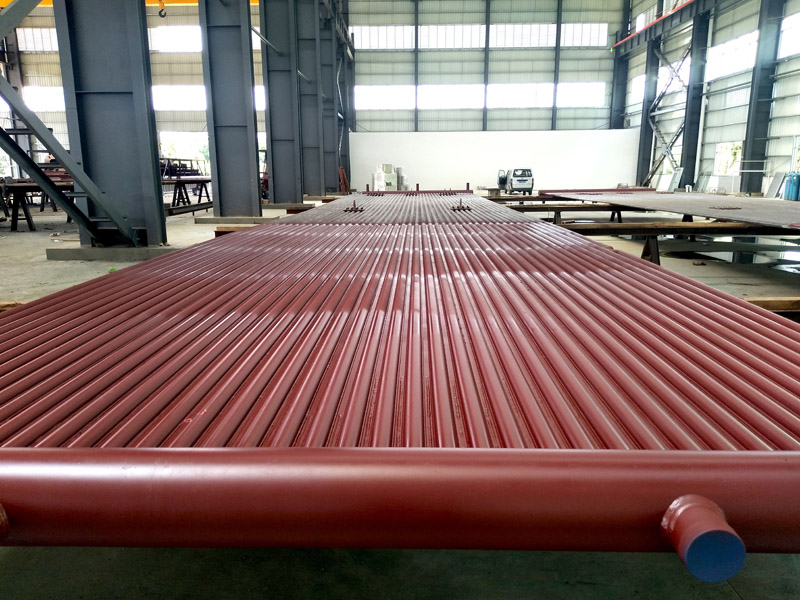What is membrane water wall panel?
The Membrane water wall panel is the main heating part of the boiler, which is composed of several rows of steel tubes, distributed around the boiler furnace. Its interior is flowing water or steam, and the outside receives the heat from the flame in the boiler furnace. It mainly absorbs the radiant heat of high-temperature combustion products in the furnace, in which the working medium rises and evaporates.
Membrane water wall panel refers to the water wall composed of a gas tight pipe panel welded by flat steel and tubes. The membrane water wall can ensure the furnace has good tightness and can significantly reduce the air leakage coefficient of the furnace and improve the combustion conditions in the furnace for negative pressure boilers. The utility model can increase the effective radiation heating area, thereby saving the steel consumption.
 Advantages of Membrane water wall panel
Advantages of Membrane water wall panel
(1) The membrane water wall has the most complete protective effect on the furnace wall, so the furnace wall only needs thermal insulation materials instead of refractory materials, which greatly reduces the thickness and weight of the furnace wall, simplifies the furnace wall structure, and reduces the total weight of the boiler.
(2) The membrane water wall also has good air tightness, can adapt to the requirements of positive pressure combustion for the boiler, is not easy to slagging, has less air leakage, reduces the heat loss of exhaust gas, and improves the thermal efficiency of the boiler.
(3) It can be welded into components by the manufacturer for delivery, and the installation is fast and convenient.
(4) The boiler with membrane wall structure is convenient and simple to maintain, and the service life of the boiler can be greatly improved.
Manufacturing of Membrane water wall panel
Manufacturing process flow of water-cooled wall pipe panel: shot blasting or polishing → pipe cutting → cutting processing → straight pipe extension → cutting 100% RT → cutting and grinding welds → cutting and installing fillet welds between welded pipes and flat steel → cutting 100% visual inspection → cutting and scribing → cutting into bent sections → cutting holes → cutting and installing welded hole bends → cutting 100% RT → cutting and installing and welding sealing plates → cutting, correcting and scribing → cutting and grinding fins and allowance → cutting chamfers → cutting water pressure → cutting through balls → cutting, painting and packaging.
Why our membrane water wall panel is special?
In order to ensure the size of the membrane wall plate and the quality of the welding beam, the tubes and fins are positioned respectively during the welding process, so that the size of the membrane wall plate, such as linear deviation, length, pitch, straightness and flatness can be controlled with high accuracy. Operated by our professional technicians and engineers, the membrane water wall panel welding process is stable and the welding beam is smooth.
Comments
Post a Comment